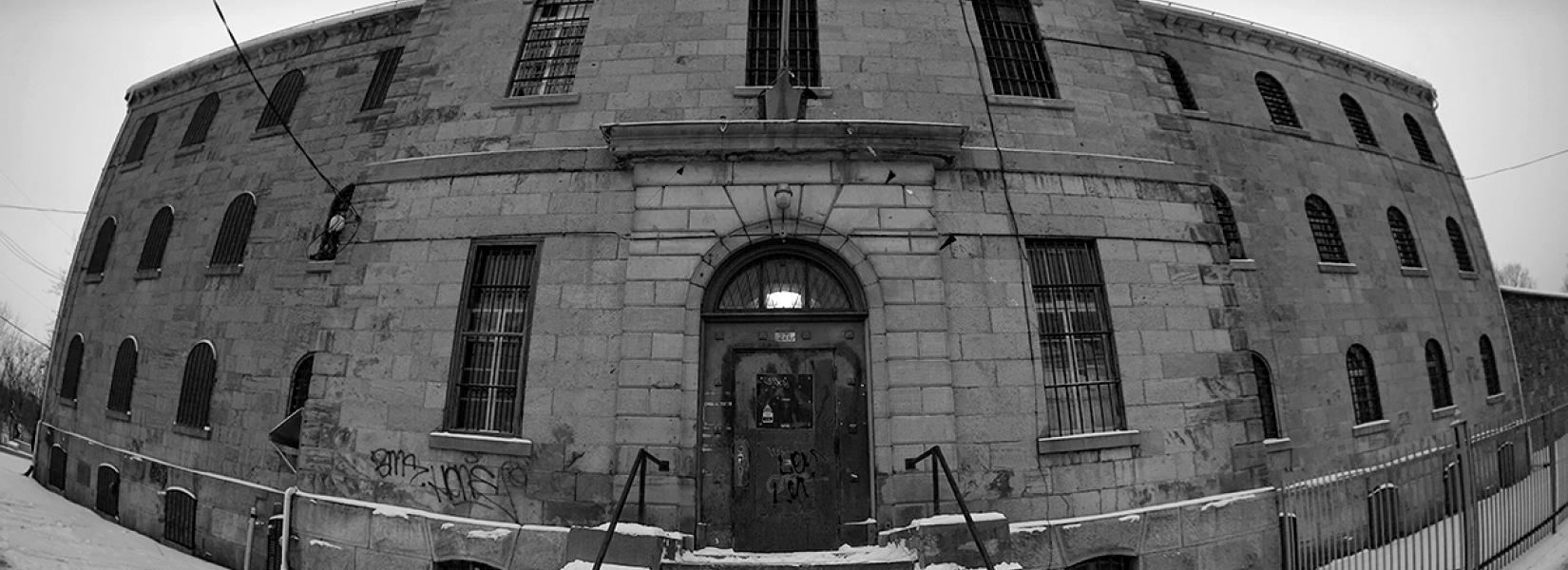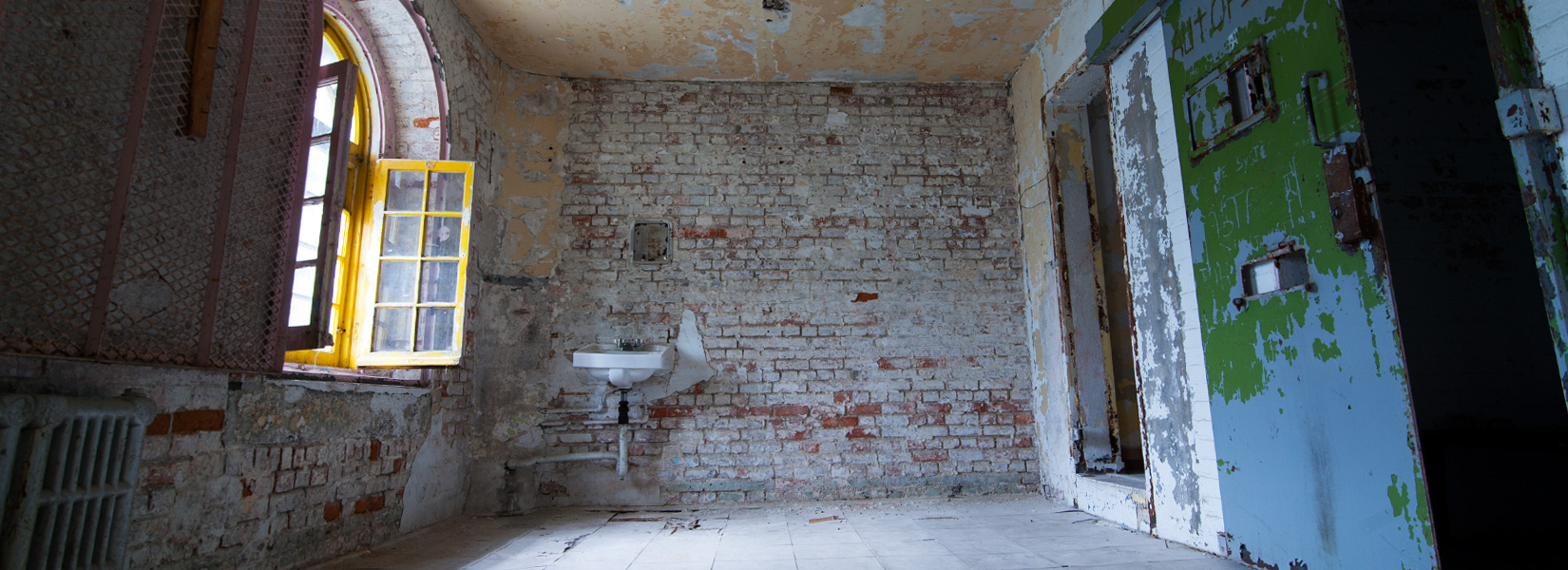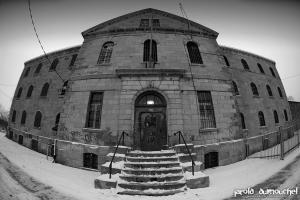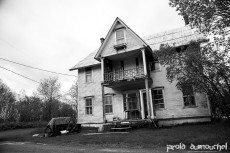Built in the woods near the hamlet of Mill Village, the Teleglobe station is no longer the shadow of what it once was. Built in 1964 at a cost of $ 9 million, the vast complex was part of an extensive satellite program for the transmission of...
Winter, the abandoned jail in Sherbrooke
Freezing day for an incredible exploration
It was hard to motivate ourselves to hit the road on this cold December morning, with temperatures of -29 ° C. But the destination was worth it: a 130-year-old abandoned prison. Moreover, I had a special permission for a photo session inside. This would be a very productive day for us in this prison, appropriately called the Winter Jail.
Its debut
In 1865 began the construction of the prison. Designs were signed by Frederic Preston Rubidge and the prison was built at a cost of $ 30,734. Opened in 1870 and completed in 1872, it has 51 cells, including a wing of three cells for women. It also contains an isolation cell, a parlor, a chapel and an infirmary.
It took only few years for the penitentiary to get the deplorable reputation of the unhealthiest prison in Quebec. While the cells are so tiny that there is barely enough space for a single bed, prisoners are forced to use chamber pots for their needs. In 1899, the prison is finally equipped with toilets. Also, seven cells on the ground floor are uninhabitable due to the extreme humidity that prevails there. Running water is installed in 1914. And also, we do not even talk about the cold winters where prisoners have to heat their own coal stove.
Located in the borough of Jacques-Cartier, the old prison was in the heart of the justice district. In short, it was only a few blocks away from the Courthouse and the residences of judges and lawyers.
Crime and Punishment
Before the death sentence was abolished in Canada in 1976, crimes punishable by death penalty in 1869 were murder, rape and treason. While Canada has hanged 710 people and only 13 women in its history, the Winter jail has hanged six of its residents. The last sentences of death in Canada were Arthur Lucas and Robert Turpin on December 10th, 1962. As for in the Winter prison, it was Albert St-Pierre, a man who was convicted of murdering Reny Malloy in Hereford. He was hanged on May 6th, 1932.
For his part, Bill Gray was the first man to be sent to the gallows on December 10th, 1879. A portable gallows by the way, because it was shared with other judicial districts of the region. Moreover, Gray will claim his innocence until his last day. Even if he had been found with personal belongings of the victim and made, during his arrest, contradictory statements. Probably ill-advised by his lawyer, his defense was based on the fact that there was no evidence that the charred body found at the scene of the crime was indeed that of the victim.
Interestingly, the executioner Radcliffe, responsible for several hangings at the Winter prison was regularly criticized by doctors who were there to confirm the death of the condemned. They resented his sloppy work which resulted in a long agony where some prisoners were swinging twenty minutes at the end of their rope before being declared dead.
The prison world has always been known for its hardness. Also, many families affected by the criminals inside their own families had a lot of difficulties to live with this sad reality. Guilty of stealing a horse in Waterville, Samuel Madeleine received, in 1913, the visit of his mother and his sister a few hours after his arrival at the prison. Insulted to have a criminal in the family, his mother told him that "she would prefer to see him six feet under rather that inside the penitentiary." He was found dead, hanged in his cell a few hours later.
The outlaw of Lac-Mégantic
While justice apparently unjustly deprived his father from his farm, Donald Morrison, nicknamed the outlaw of Lac-Mégantic, killed in June 1887 the bounty hunter Lucius Warren who had been sent to find him. His head was priced at more than $ 3,000, a fortune at the time. More than 450 police officers and militiamen participated in his search and after two years on the run, he was captured and sent to the Winter jail awaiting trial. Special measures were taken to prevent his escape and he was finally sentenced to 18 years, a sentence he served in St. Vincent-de-Paul, a jail located in Laval.
The murderer millionaire on the loose
The story of Harry K. Thaw began in New York, when he was imprisoned following the murder of his wife’s lover, Evelyn Nesbit. Nesbit was, in the early twentieth century, a model that inspired photographers and portraitists, captivated by her beauty. She was also a dancer in various musicals on Broadway.
Thaw was the son of a railroad baron in Pittsburgh and he was extremely possessive towards his young wife. It was even said that he was carrying a gun. When he accompanied his wife to the theater, he became enraged when he saw his wife's lover. Thus, during the representation of the song I Could Love a Million Girls, he murdered the latter with three bullets exclaiming: "You won't see this woman ever again!"
At the end of his first trial, the jury failed to agree on a verdict. In the second trial, he pleaded temporary insanity and the mother of the accused offered to Nesbit an amicable divorce with a million dollars check in exchange with a plea in his favor. If she gets a divorce, her stepmother never paid the promised sum.
Incarcerated in the Matteawan Beacon psychiatric hospital in upstate New York, Thaw escaped and crossed the Canadian border, where he was captured and then sent to the Winter jail to await extradition. Returned to the United States, he was finally released in 1915 after being judged sane.
The end of an era
In June 1990, the prison was permanently closed and the last residents were transferred to surrounding prisons. The Société de sauvegarde de la vieille prison was created and they acquired ownership for a nominal sum of one dollar. Although the former governor's house attached to the prison is now occupied and that parts of the prison are used by small businesses, most of the building is left unoccupied. The owners are trying to find a new use for the property and for the moment, nothing is happening.
Related content
Closed in 1987, the former Canadian military base located in St-Adolphe-d'Howard began its operations in 1950. Its mission: monitor the airspace in southwestern Quebec and northeastern Ontario. True vestige of the Cold War between the Western...
The place is surprising. This old rooming house next to an old railway was, in another era, the nerve center of this small village in Eastern Townships. Abandoned for over fifty years according to some, it remained intact and time has slowly...
Located near Highway 10, camping Martel, also known as the Gite du passant, is abandoned for a long time. Moreover, I had to discuss with the old villagers to know the name of that place. I tried to learn more by sending an email to the city, but...














































